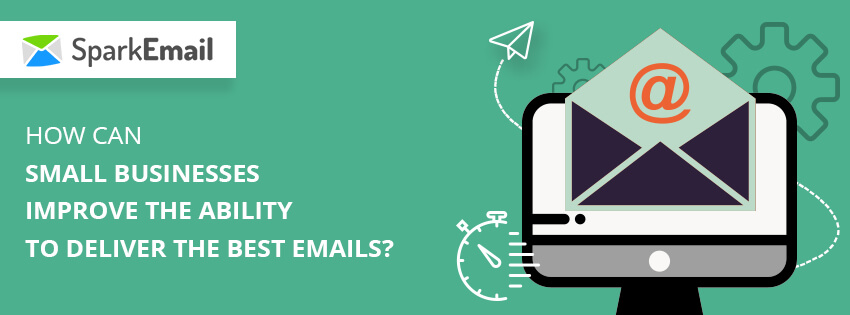Emails work best for the business communication, whether it is B2B or B2C; small, medium or large. Based on the Returnpath observation, only 80% of the emails sent are delivered to the intended inboxes. This means not all of the subscribers are receiving your emails.
You can though find some alternative means to stay connected with them, if not, the chances are you will lose them for forever. If you observe well, across all type of businesses, getting your emails delivered to the maximum subscribers is the common issue in the email marketing.
Often small businesses and newly recruited email marketers in order to deliver the emails to the large audience forget to follow the best practices thus affecting the entire sender reputation. This is the very reason why we are here sharing some best practices for the small businesses to look for.
Need Help?
Get in touch with us now!Before we jump to the ‘best practices’ to send the emails, first let us understand how the emails get delivered?
Now if you must be thinking that as soon as you create the email template and hit the SEND tab to deliver the mail to the desired inbox is the process, maybe there is something you need to learn about more. Allow us to share the complete process in the algorithm style.
Email marketer>ESP>ESP server(SMTP)>ISP server> Internet>ISP server>Mail server(IMAP/ POP3)>Email client>Subscribers.
From the above algorithm it is visibly understood that no emails directly land to the subscriber’s inbox. Numerous ISP (internet service provider) first validate and check the emails if there is any malicious code, check the sender’s reputation, Sender policy framework (SPF), DKIM (DomainKeys Identified Mail) of the IP address and SPAM language if there is any.
If found any error or red flagged in the above factor the chances are your email will not be sent to the subscriber, thus restricted by your ISP. If your email gets authorized through the ISP SPAM filter, it will land to the subscriber’s spam folder of email inbox. Therefore it is important to take care of the email deliverability.
What are the common errors obstructing Email deliverability?
Purchased email list: it will never improve the email deliverability but increase in SPAM complaints and unsubscribe requests will hit the edge.
Non- confirmation of collected email addresses: When you do this, the piling up of the wrong email addresses will pile up on the email list. This will increase your hard bounce rate, giving the bad reputation of your brand to the audience.
Inaccurate email list maintenance: majorly email marketers make the mistake to filter the inactive subscribers from the list. Result? The inactive inboxes will have huge number of unopened emails and the ISP will filter it as SPAM by mistake.
Not giving importance to the domain authorization: Ask/ request your subscriber to add your brand to their address list. Why should you do this? The domain authorization led the ISP to spam filters, recognizing the fact that the FROM address is from the trustworthy source. This will help your brand emails to land directly to the inbox rather than the junk/spam folders of the subscriber.
Non-observation of email metrics: Hitting the send button and then forgetting about the emails is not what the successful email marketers do. You have to keep the track of the changes and improvements about the email marketing campaigns to move ahead than the competitors. The email metrics help you to learn the likes and dislikes of your subscribers in regard to the brand.
There are some cues to learn from the email metrics:
- Returned email with the soft bounce notice: this happens when the subscriber did not receive your email due to the various reasons such as full storage of inbox/ email server was unable to handle the request, etc. Though all these doesn’t reflect the bad reputation of the sender.
- Returned emails with the hard bounce notice: Due to the subscriber’s incorrect email address, email was unable to deliver. Few returned emails with the hard bounces are acceptable. The increased rate of the hard bounce notices over the returned emails indicates either the email list is purchased or improper lead generation practices is carried on. This reflects the bad reputation of the sender.
- Deleted email without opening it: this can happen when the email line is plain and simple or not-so-popular sender is. Though it is not considered anything wrong yet it is always good to be cautious.
- Increased unsubscribe rates/ Email marked as SPAM: When the subscriber add or mark your email as SPAM, the domain address is added to the defaulter list. If the huge number of subscribers have clicked UNSUBSCRIBE for any of the email campaign, the chances are ISP will ban your account to maintain your reputation.
So how to improve the email deliverability as an owner of the small business?
- Relevant content in the right format structure.
- Customizing the email designs to avoid the SPAM filters.
- Inform your subscribers, especially newly joined one about how many times and when will you be sending them the emails.
- Learn and practice the different anti-spam laws of the different countries.
